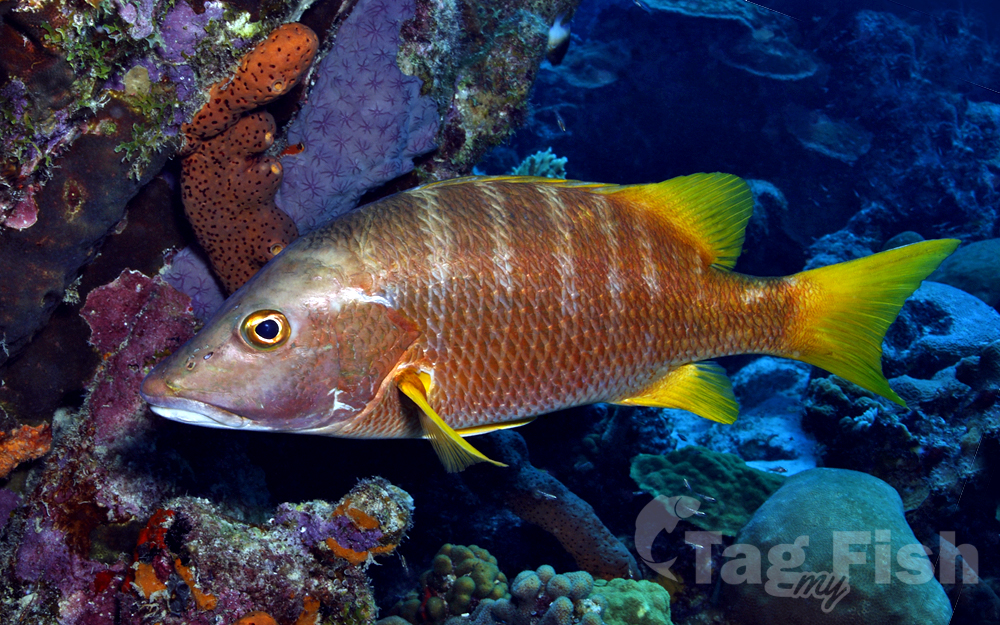Schoolmaster snapper
(Lutjanus apodus)

Classification
General data
The schoolmaster snapper (Lutjanus apodus), also known as the dogtooth snapper, is a species of marine ray-finned fish, a snapper belonging to the family Lutjanidae. It is found in the western Atlantic Ocean. Like other snapper species, it is a popular food fish.
Description
The schoolmaster snapper has a moderately deep body which is robust and slightly compressed with a long, pointed snout and a large mouth. One of the upper pairs of canine teeth is clearly larger than back teeth in the lower jaw and can be seen when the mouth is closed. The vomerine teeth are arranged in a chevron or crescent-shaped patch with a line of similar teeth extending from the middle of the patch towards the rear. The preoperculum has a weakly developed incision and knob. This species has a protrusible upper jaw which is mostly covered by the cheekbone when the mouth is closed and both pairs of nostrils are simple holes.
The dorsal fin is continuous with a slight incision separating the spiny part from the soft rayed part. The dorsal fin has 10 spines and 14 soft rays while the rounded anal fin contains 3 spines and 8 soft rays.[ The interior scale rows on the back are parallel to the lateral line. The caudal fin is slight emarginate or truncate. The pectoral fins are longer than the distance from the longest point of the snout to the tail edge of the preopercle, reaching the level of the anus.
The color is olive-gray to brownish on the upper back and upper sides, with yellow to reddish mite around the head. The lower sides and belly are lighter; there is no dark lateral spot below the anterior part of the soft dorsal fin.
There are 8 narrow, light vertical bars on the side of the body which may be faded or absent in large adults. A solid or broken blue line runs beneath the eye; it may also disappear with growth. From the upper jaw to the tip of the fleshy opercle, the line is often broken into parts that resemble dashes and spots. The fin and tail are bright yellow, yellow-green, or pale orange, and the snout contains blue stripes.
This fish attains a maximum fork length of 79.1 cm (31.1 in), although 35 cm (14 in) is more typical, and the maximum published weight is 10.8 kg (24 lb).
Distribution
The schoolmaster snapper is found in western Atlantic Bermuda and the southeastern coast of the United States from Cape Canaveral in Florida southwards to the Bahamas and into the Gulf of Mexico where its range runs from the Florida Keys as far north as Tampa, Florida than from Alabama westwards along the coast of the Gulf to the Yucatan Peninsula and northwestern Cuba. It occurs throughout the Caribbean Sea. It has been recorded as far north as Massachusetts but these records involve juveniles that cannot survive the winter.
It is typically found at depths between 1 and 50 m (3 ft 3 in and 164 ft 1 in), with one record at 89 m (292 ft).[1] Adults usually stay near shore shelter around elkhorn and gorgonian coral. Large adults are sometimes found on the continental shelf. Typical depths are up to 4 m (13 ft). reported that at night, schoolmaster snapper may increase their range to twice the daytime range, mostly by visiting seagrass beds.











